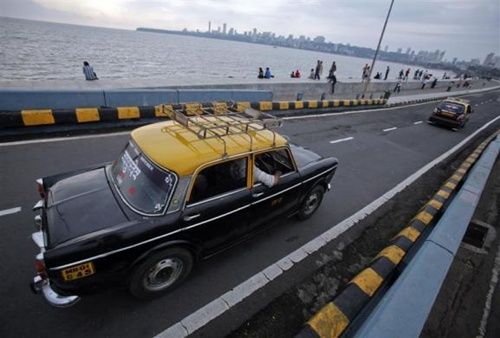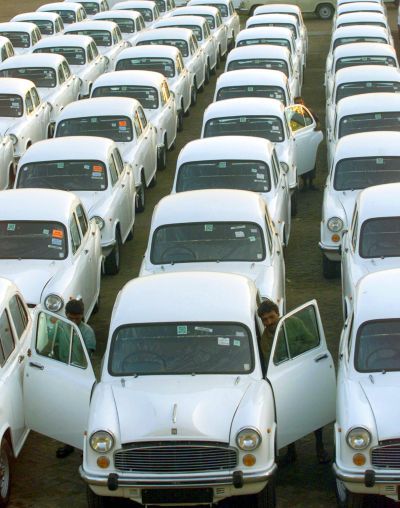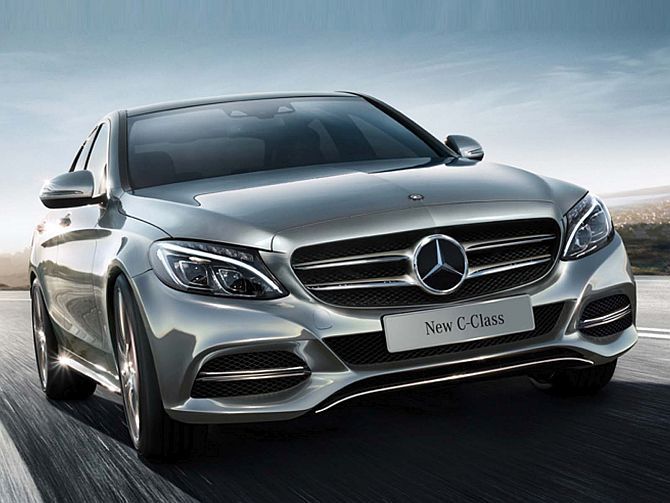The total number of passenger vehicles (cars and utility vehicles) sold annually in the 1970s was 32,000 units - less than even one week's sales today.

"I bought my Premier Padmini through a government allotment in 1964 for Rs 23,000," says R C Bhargava, chairman, Maruti Suzuki (India).
By his own admission, he was lucky because the waiting period for a Premier Padmini was several years in the 1960s and '70s. The only way to fast-track an allotment was to have friends in either the government or Premier Automobiles.
Car sales, as a result, were muted. According to data from the Society of Indian Automobile Manufacturers (Siam), the total number of passenger vehicles (cars and utility vehicles) sold annually in the 1970s was 32,000 units - less than even one week's sales today.
In 2014, 2.5 million units were sold, ranking India as the sixth biggest car market globally. In growth rate, India was at number two.
The government's growth-stifling licence raj was a major deterrent in the 1970s. "Volumes were significantly lower than demand, leading to long waiting lists. There were other irritants like requirement of full payment and unofficial premiums. The image of car makers suffered being seen as monopolistic and technologically lazy," said a top executive with a car company in the 1970s.

There were only five main players in the market, four homegrown - Premier Automobiles (Premier Padmini), Hindustan Motors (Ambassador), Mahindra and Mahindra (famous for the Willy Jeep) and Standard Motors (now defunct).
The only foreign one was Italian carmaker, Fiat, which had an alliance with Walchand Group's Premier Automobiles, to locally produce its cars.
Two key events changed the market. The entry of then government-backed Maruti Suzuki in 1983 and the end of licence raj in 1991, when India allowed 51 per cent foreign direct investment (FDI) in auto manufacturing. The FDI limit was subsequently raised to 100 per cent.
The rollout of Maruti's first car, M-800 in 1983, was followed by the launch of Omni and Gypsy in 1984 and 1985. The government also ended its stake in the company over time.

Photograph, courtesy: Maruti Suzuki
The entry of Maruti Suzuki was aided by the launch of car loans. "Banks entered this business after Maruti came into the market. Initially, Maruti formed two joint ventures, keeping its equity as minority, with Citibank and GE Capital to encourage them to enter this business. Later, most banks entered this business," added Bhargava.
Harsh Roongta, director, Apnapaisa.com, said, "Citi Bank and Bank of America were the major players in the 1980s. Later, ICICI got into car financing in 1998. By 2002, ICICI become the leading player in auto financing.
Premium cars were charged at a lower (interest) rate, while standard cars were at a higher rate. Car loans in those times carried third-party hypothecation and no income proof was required. Thus, auto financing penetration increased very quickly. As many as 80 per cent of car buyers take the finance route for purchases, today."

There are now brands aplenty.
There are 18 entities now (some like Mercedes, BMW, Audi are not featured by the Siam number). Toyota, Volkswagen, General Motors, Ford, Renault, Nissan and Isuzu have invested billions to set up their own manufacturing facilities.
There is no absence of variety. Hatchbacks, sedans, sports utility vehicles and other new vehicle forms have been introduced.
Some like the compact sedan and compact SUV are unique to India. Renowned global luxury car makers such as Mercedes, Audi and BMW have set up sales offices and assembly facilities in India, offering assembled and fully imported carlines.
The fortunes of the two success stories in the 1970s - Premier Automobiles and Hindustan Motors - have changed beyond recognition.
Both brands succeeded in a sellers' market, in which sky-high demand was matched by price control and volume controls through capacity limitations imposed by the government. In a free market, they are struggling for survival.

The other big factor that has aided the growth of the car market has been disposable income. This has jumped 115 times compared to 1975, according to US-based Trading Economics.
Obviously, with so many brands, more disposable income and easy car loans, one car is not enough for many families. Consequently, the average holding period of around 10-12 years in the 1970s and 80s is down to four years nationally. In urban areas, this cycle is even shorter, at around three years.
Despite all this, India continues to have one of the lowest car densities, at 13 per 1,000 people. Compared this with China (45), Brazil (160) and Indonesia (42).
Obviously, it is expected that up to 2020, India will enjoy strong sales growth, with a compounded annual growth rate of 11 per cent, says a KPMG study.









